Scenic Rivers
To date, ten river segments have been designated South Carolina State Scenic Rivers. Follow the links to learn more about these natural treasures.
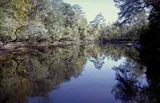 |
Ashley River - A 24-mile segment of the Ashley River was designated a State Scenic River extending from Sland's Bridge (US Highway 17-A) near Summerville to the Mark Clark expressway (I-526) bridge in Charleston. Within this segment, a visitor can experience a blackwater swamp, the tides of the Atlantic, and the history of South Carolina. |
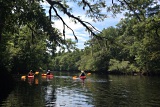 |
Black River - In June 2001, a 75-mile segment of the Black River became South Carolina's seventh State Scenic River. This scenic river segment begins at County Road #40 in Clarendon County, and extends southeast through Williamsburg County to Pea House Landing at the end of County Road #38 in Georgetown County, South Carolina. |
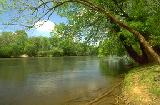 |
Broad River - In May of 1991, the Broad River from 99 Islands dam to the confluence with the Pacolet River was officially recognized by the South Carolina General Assembly as a State Scenic River. The riparian forest is home to diverse plant and animal life including the state-endangered wild ginger. Bluffs on the Broad River offer a breathtaking view of spring wildflowers. |
 |
Catawba River - In June of 2008, a section from the Lake Wylie Dam downstream to Highway 9 was officially recognized by the South Carolina General Assembly as a State Scenic River. The riparian forest is home to diverse plant and animal life including one of the best flowering displays of Rocky Shoals Spider Lilies in the country. |
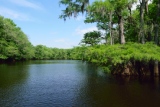 |
Great Pee Dee River - River travelers see a distinct change in the Great Pee Dee River's character as they wend their way from the US 378 Bridge to Winyah Bay. Bald cypress – tupelo gum and bottomland hardwood forests, with hairpin meanders, sandy point bars and interconnected oxbow lakes surround the upper portions. |
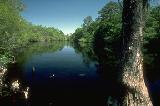 |
Little Pee Dee River - Blackwater swamps and sloughs, white sandy beaches, cypress trees, and a feeling of wilderness characterize this State Scenic River. Fourteen miles of the Little Pee Dee River from Highway 378 to the confluence with the Great Pee Dee River were designated as a State Scenic River in March of 1990 by the Legislature. |
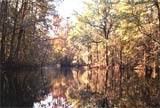 |
Little Pee Dee River of Dillon County - The Little Pee Dee River of Dillon County was designated as a State Scenic River in June 2005. This river section extends 48-miles through Dillon County from the Marlboro County line above Parish Mill Bridge on State Road 363 to the confluence with Buck Swamp at the Marion County line. The Little Pee Dee is a classic blackwater river with outstanding scenery, recreational opportunities, and fish and wildlife habitats. |
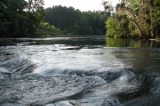 |
Saluda River - A 10-mile segment of the Saluda River beginning one mile below Lake Murray Dam to its confluence with the Broad River was designated a State Scenic River by the Legislature on May 31, 1991. The Lower Saluda Scenic River is recognized as an outstanding recreational resource. Trout and striped bass fishing as well as whitewater (class II to V rapids) and flatwater paddling are very popular on this piedmont river. |
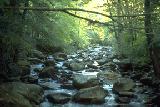 |
Middle Saluda River - The Middle Saluda River became the first river protected under the Scenic Rivers Program in South Carolina in 1978. Located in northern Greenville County and completely within Jones Gap State Park, about five miles of the Middle Saluda and its major tributary, Coldspring Branch, are protected by a 600-foot wide scenic corridor established through an agreement with the South Carolina Department of Parks, Recreation and Tourism. |
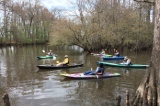 |
Lynches River - Along its winding course, the Lynches River passes through a varied landscape of pine uplands, farms, rural crossroads, and deep swamp forest. The upper section of the Lynches River was designated a State Scenic River on March 24, 1994, while the lower section was designated on June 11, 2008. This is currently the longest State Scenic River, at approximately 111 miles in length. |
